Welcome to our journey of discovery as we delve into the captivating flora of Andaman and Nicobar Islands. These stunning islands, cradled by the Bay of Bengal, are not only known for their breathtaking beauty but also the incredible diversity of plant life that calls them home. In this blog post, we will embark on an exploration of the unique and vibrant plant species that grace the landscapes of these islands.
The Flora of Andaman and Nicobar Islands is a testament to nature’s creativity, featuring an array of plants that have adapted to the island’s diverse environments. From the lush rainforests to the pristine beaches, each corner of these islands tells a story of survival, adaptation, and symbiosis among plants and their surroundings.
Join us as we uncover the secrets of these botanical wonders, from the endemic species that can only be found here to the vital role that these plants play in maintaining the delicate balance of the island ecosystems. Our journey will take us through the lush foliage, vivid blooms, and remarkable adaptations that make up the Flora of Andaman and Nicobar Islands. So, let’s begin our exploration and gain a deeper appreciation for the natural treasures that enrich these remarkable islands.
Table of Contents
Exploring the Flora of Andaman and Nicobar Islands
Get ready for an enchanting voyage into the world of Andaman and Nicobar Islands’ flora, where nature’s wonders come alive in vivid colors and fascinating forms. Imagine yourself strolling through lush rainforests that buzz with life or wandering along serene coastlines adorned with unique coastal plants. These tropical islands, nestled in the calm waters of the Bay of Bengal, hold a treasure trove of captivating plant life that is bound to capture your imagination.
Highlights to Look Forward:
- One-of-a-Kind Plants: The islands are home to a variety of plants that you won’t find anywhere else on Earth. These exclusive botanical gems showcase the islands’ distinctive evolution.
- Discover Rare Beauties: As you explore, you’ll encounter rare and exquisite plants that have adapted to the island’s unique conditions. Each plant has its own story of survival to tell.
- Natural Remedies: Delve into the world of medicinal plants, where nature provides remedies that have been used for generations. Uncover the healing properties of these incredible plants.
- Flavors of the Islands: The islands’ plant life isn’t just visually stunning – it also adds flavor to the local cuisine. Learn about the plants that contribute to traditional dishes and drinks.
- Conservation Efforts: Explore the efforts being made to protect the islands’ remarkable plant diversity through conservation initiatives.
A Visual Treat:
Imagine being surrounded by a symphony of colors, from vibrant greens to delicate blossoms. The islands’ flora presents a visual feast that will leave you in awe of the beauty of the natural world.
A Peek at Diversity:
Here’s a glimpse of the variety you can expect:
| Plant Category | Examples of Species |
| Unique Islanders | Andaman Pygmy Date Palm, Nicobar Megapode |
| Nature’s Healers | Andaman Noni, Nicobar Nutmeg |
| Coastal Charmers | Beach Morning Glory, Sea Hibiscus |
| Tasty Island Treats | Breadfruit, Banana Plant |
| Nature’s Protectors | Andaman Padauk, Nicobar Ironwood |
Ready for the Adventure:
Whether you’re a curious explorer or a nature enthusiast, the journey to uncover the Andaman and Nicobar Islands’ flora promises an unforgettable experience. Roam through lush forests, breathe in the coastal breeze, and immerse yourself in the natural diversity that sets these islands apart. It’s a chance to connect with nature in its purest form and to appreciate the remarkable world of plants that call these islands home.
Top 20 Most Common Plants in Andaman and Nicobar Islands
In Andaman and Nicobar Islands you will find False Bird of Paradise, the common coconut palm Rangoon climber, lambsquarters sweet alyssum, and many more! There are 20 varieties of plants. Make sure to look at these plants when walking around the streets, in parks, or in public gardens.
Most Common Plants:
- True bird in paradise

The False Bird of Paradise (Heliconia Rosatrata) is a flowering herbaceous plant that is native to Central America and surrounding islands. The nectar produced by this plant attracts birds. The flower is of national significance in Bolivia.
- Common coconut palm

The common coconut palm (Cocos nucifera) is a broadleaf evergreen native to the tropical islands of the Western Pacific. In the United States, common coconut palms are found across Hawaii, southern Florida, and Texas. The plant produces coconuts.
- Rangoon creeper
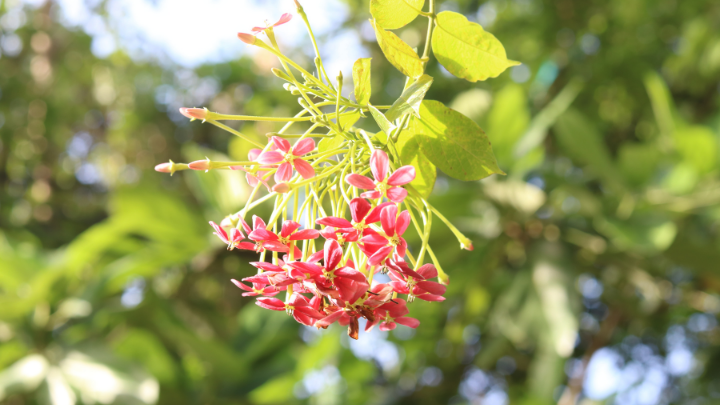
The lush, evergreen vegetation of the Rangoon (Combretum indicum) is a perfect option for building pergolas, fencelines, or trellises. When they are in bloom, these flowers release pleasant scents that add to their natural beauty, but only once the sun sets. It’s a popular destination for pollinators and insects that seek nectar with their long tongues.
- Lambsquarters
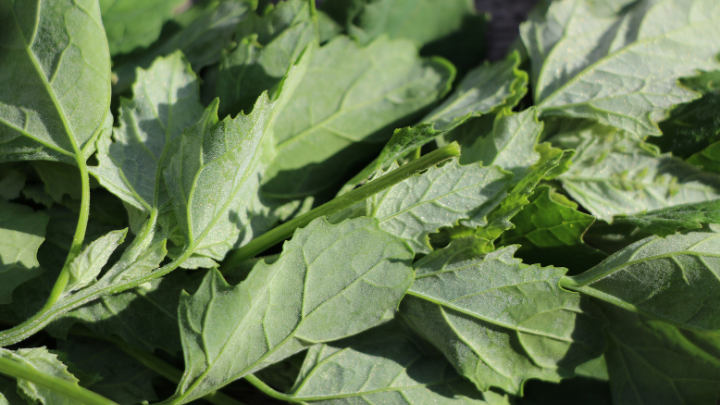
Lambsquarters are known by many different names, such as pigweed, bacon weed, and goosefoot. This plant appears from nowhere and is thought of by many as a weed that is a nuisance. But the leaves of the plant are edible. They can be cooked in the same way as spinach and are loaded with nutrients.
- Sweet Alyssum
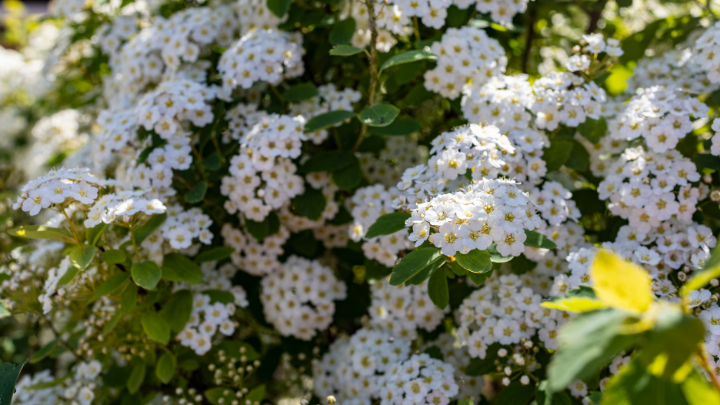
Lobularia maritima, also known as sweet alyssum, is one of the annual flowers that grows extremely low and tends to spread its leaves across the soil, forming the appearance of a mat. This beautiful ornament is a great option for a ground cover or a plant for bedding.
- European honeysuckle
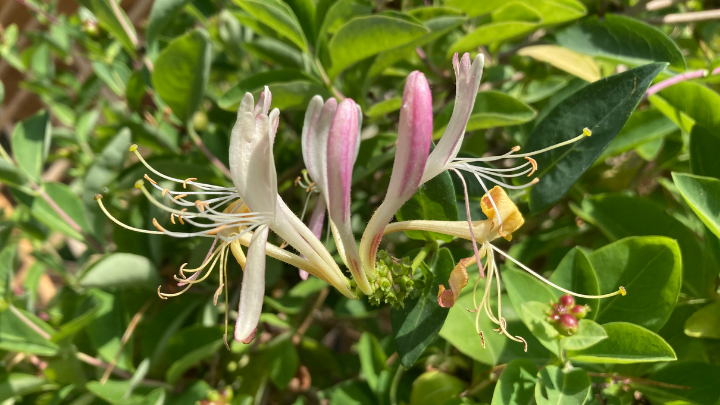
European honeysuckle (Lonicera periclymenum) is a flowering plant that is native to Europe, North Africa, and Turkey. As with all honeysuckles, European honeysuckles’ blooms are white while they are blooming. They then turn yellow. The flowers smell great at night and attract insects like bees and moths to pollinate.
- Peace lily
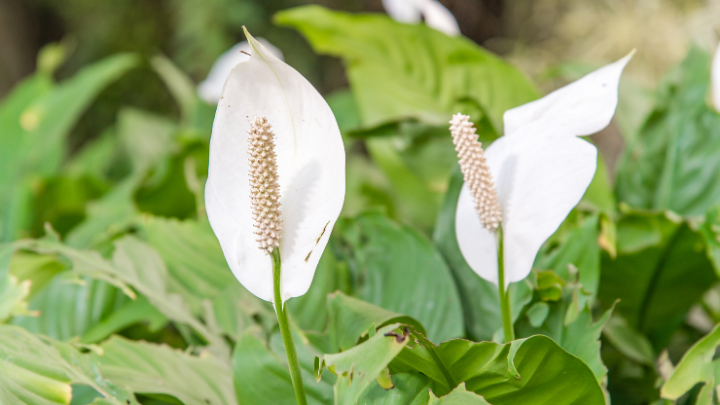
The peace lily is given its scientific name, Spathiphyllum wallisii because of a combination of two Greek words, “spath” and “phyl,” which refer to spoons and leaves, respectively. The huge, graceful white spathe of peace lily is reminiscent of the white flag, which is a worldwide symbol of peace or truce.
- Rosemary
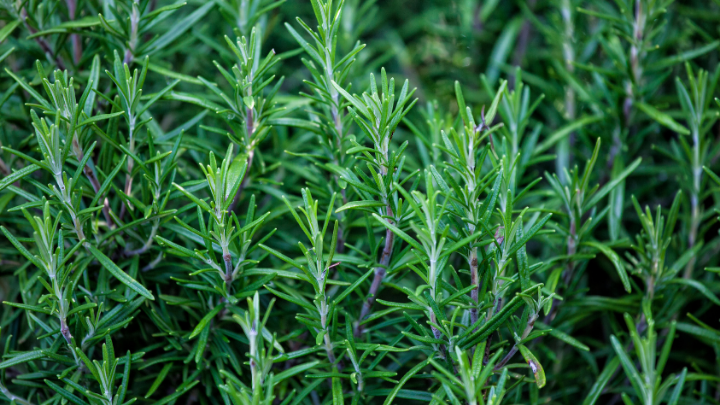
The rosemary plant has delicate flowers and evergreen leaves. It emits a distinctive smell and is used in cooking and in the creation of soaps, perfumes with scents, and candles. Rosemary is a native of the Mediterranean region, where evidence of its use by humans goes back at least 7000 years.
- Beach naupaka

Beach Naupaka (Scaevola sericea) is a slender plant that can grow as high as 3 meters tall. It is found in dry coastal regions with tropical climates. The fruit of beach naupaka is floating and can germinate even after being in saltwater for up to an entire year.
- Royal poinciana

The Royal Poinciana (Delonix regia) is often referred to as its “peacock tree” or the “flamboyant tree.” It’s a Madagascar native and is renowned for its striking red-yellow or crimson flowers. Its growth rate is incredible and can reach its highest size of 12 meters in just a short time.
- A string of nickels

Nickel string (Dischidia Numularia) is an evergreen succulent that is mostly found in tropical zones. It got its name due to its round leaves, which range from yellow to green and resemble trailing coins tucked away on strangling stems. The plant is a beautiful indoor houseplant but is suitable to be planted on trees.
- Porcupine flower

If you’ve been able to guess that the flowers of the porcupine are very prickly, then you need to consider yourself the highest mark since this single-stemmed plant has very prickly leaves. The porcupine flower is used as an ornamental shrub for its golden and bright flowers that can bloom multiple times throughout the year in a climate that is warm and has lots of sun.
- Creeping Juniper

The Creeping Juniper (Juniperus horizontalis) is a juniper shrub in North America, particularly Canada. It is mostly grown as an ornamental shrub to provide garden landscaping. There are more than 100 cultivars that grow creeping juniper.
- Umbrella palm

The Umbrella Palm (Cyperus alternifolius) is an annual houseplant that thrives best in full sunlight, bright indoor light, or mild shade. The umbrella palm gets its name from its leaves, which resemble an umbrella’s spokes growing over a long, upright stem. It’s a perfect water plant or pond because it thrives in the water.
- Simple leaf chaste tree

Simple leaf the chaste tree (Vitex trifolia) which is a massive plant in tropical coastal climates from East Africa to Polynesia. This plant’s Latin name, ‘Vitex’, has been used since the time of Pliny the Elder in the writings of Pliny, and the word “trifloria” refers to how the leaves of the shrub develop in groups of three.
- Giant Taro

Giant taro is indigenous to Southeast Asian rainforests. It was initially cultivated in the Philippines. The huge leaves look like elephant ears. If cooked for an extended period, these leaves are edible, but the sap that comes from the plant could irritate the skin. This plant can be toxic to cats, dogs, and horses.
- Curved flower with woody Chassalia

Curved flower woody Chassalia can be found in tropical regions in southern Asia. It is getting taller and taller, producing tiny fruit with two seeds per fruit.
- Bael fruit

Bael Fruit (Aegle marmelos) is indigenous and is found in India as well as Southeast Asia. It is considered sacred by Hindus The tree is utilized in some rituals of their religion. Although it’s similar in appearance to a pear, the fruit is extremely dense and, when smashed open using a hammer, is scented like roses! The fruit is given in Nepal to women who are young as a symbol of fertility.
- Sulfur cosmos

Sulfur cosmos (Cosmos sulfurous) flowers in the spring and is native to Mexico, Central America, and South America. Although extensively utilized as an ornamental plant, sulfur cosmos is regarded as an extinct species within the United States. It is a magnet for butterflies, bees, and monarch butterflies, among them the famous butterfly.
- Desert rose

Desert roses are widely grown for use in the house or as bonsai because of their stunning flowers. As a succulent, which comes from its native region of the Sahara as well as tropical Africa and Arabia, it needs an average temperature of 10 to withstand. The sap of the plant was used for poison arrows during the time of Africa.
There are 63 different fruiting plants throughout India, Andaman and Nicobar Islands. The most popular varieties include False Birds of Paradise, Common Coconut Palm, and Lambsquarters. There aren’t all of them; however, finding them all can add some color to your day!
However, 15 harmful plants are also found throughout India, Andaman and Nicobar Islands. They comprise Lambsquarters, European honeysuckle, and Creeping Juniper. If you spot any of them, make certain to stay away and shield your family members and pets from being poisoned.
It doesn’t matter which interesting plant species you can find in the vicinity of India, Andaman and Nicobar Islands. With Picture This, you’ll be able to gain access to a precise identification of every plant that you encounter! So you can learn about each plant you encounter and take in the stunning beauty of the natural world. Having online identification of plants accessible to you can help to create a more fascinating garden, safeguard your family from dangerous plants, and lead a healthier life.
Read This Also: Mysore Zoo: Everything You Need To Know
How Plants Thrive in Andaman and Nicobar’s Environment
Have you ever wondered how plants manage to grow so well in the diverse landscapes of the Andaman and Nicobar Islands? These stunning islands, surrounded by the Bay of Bengal, have different types of places, like forests and coasts. In each of these areas, plants have special ways to survive and do well.
Handling the Coast:
Coastal places on the islands are tough for plants because of the salty air and strong winds. But plants have learned how to save water and stay strong. Some trees like mangroves have roots that help them stay safe from the water.
Rainforest Life:
The islands also have thick rainforests where plants have to share sunlight and space. Big trees have thick roofs, so not much sunlight reaches the ground. Small plants have big leaves to catch the light. Some plants live on other plants and get sunlight from them.
Plants Only Here:
Some of the plants on these islands can’t be found anywhere else. This is because the islands are far away from other places. These plants have changed and adapted to the islands’ special conditions.
Living Together:
Plants on the islands live together in a nice balance. They help each other and animals, like birds and insects, help them too. This balance is important for the islands’ nature.
Keeping Safe:
Learning how plants do well in these places makes us want to take care of them. We need to save these special places so that the plants can keep growing. Exploring how plants live in the Andaman and Nicobar Islands helps us understand how amazing nature is and why we need to protect it.
Protecting and Preserving Andaman and Nicobar’s Flora
The plants in the Andaman and Nicobar Islands are very special. They help keep the islands’ environment healthy and provide homes for animals. But these plants face some problems, like people cutting down their homes or new plants taking over. To make sure these plants stay safe, many people are working together.
How We Help:
- Fixing Homes: People are working to fix the places where plants live so they can grow well.
- Watching and Helping: People are also watching the plants and making sure they are okay. If a plant is in trouble, they help it.
- Teaching Others: People are telling others why plants are important and how to take care of them.
Special Homes Need Special Care:
The islands have many different places for plants to live, like forests and coasts. Each place needs different care to keep the plants happy.
Your Role:
You can also help! When you visit the islands, be careful not to harm the plants. Follow the rules and respect nature. This way, we can all work together to keep the plants safe and make sure the Andaman and Nicobar Islands stay beautiful and full of life.
Read This Also: Kashmir Travel Guide
Conclusion
In conclusion, the Flora of Andaman and Nicobar Islands leaves us with a deep appreciation for nature’s beauty and adaptability. As we conclude our exploration of these islands’ plant life, we’ve learned how plants, animals, and their environment all work together.
From the tall trees in the rainforests to the small flowers by the sea, each plant has an important role in keeping the islands’ nature balanced. As we look back on the vibrant colors, different shapes, and amazing ways plants survive, we’re reminded of how crucial it is to protect these treasures for the future.
Whether it’s the special plants that only grow here or the way plants help animals, one thing is clear – the Flora of the Andaman and Nicobar Islands shows how everything in nature is connected.
As we finish our journey and say goodbye to the stunning views and amazing plants, let’s take with us a renewed sense of wonder and the duty to care for these gifts of nature. Through our exploration, we’ve experienced the heart of the island’s beauty, and it’s something we can all help look after for generations to come.
Let’s take a look at my vlogs!!!